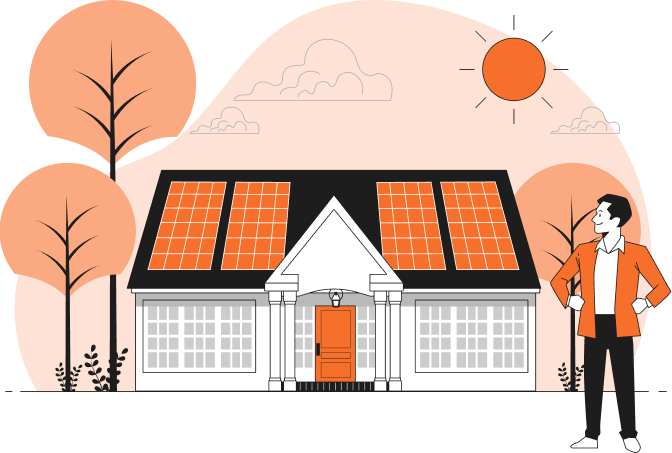Guides to UK Development Finance
UK development finance comes in many forms, with multiple lenders and products to choose from. Read on for expert advice about navigating the world of development finance.


Guides to UK Development Finance
Guide to UK Development finance can be the best option for borrowing to build a new property or convert a unit - whether for residential or commercial use.
Revolution Brokers negotiates property development finance for a vast range of clients:
• Experienced property developers and building firms.
• Professional builders who construct their own properties on parcels of land and sell them at a profit.
• Developers who haven't built anything from scratch before.
• Self-build applicants who want to develop a primary residence.
Generally, you can borrow up to around 50% to 60% of the land cost or the property that you plan to convert. Lenders are far more likely to approve an application if the site has planning permission. In other cases, they will offer to lend, subject to approval being secured.
In terms of the build costs, provided the total budget is within 60% to 70% of the gross development value (GDV), applicants can borrow up to 100%.
Property development finance tends to run on a shorter term, usually between one and three years as a maximum. The lender will need to know how you plan to repay the debt after the period ends, generally selling the development or taking out longer-term refinancing.
What are the Benefits of Bridging Finance for Property Development?
There are several reasons a property development finance loan might be the optimal borrowing for your conversion or build project:
- Many lenders will accept early repayments without charging a penalty.
- Inexperienced or first-time developers are eligible to apply provided they can provide contact details with a building contractor.
- Loan values start from £25,000 and above.
- Staged payments are aligned with critical points in the development, and interest is only charged on the amount of the facility drawdown to date.
- Other properties or assets can be used as security against the loan.
- If the development goes above or below the planned budget, there is no requirement to borrow the total amount agreed.
One of the few downsides is that the valuation will often take longer, given the unique nature of a development project. Rates are also dependent on the nature of the property and your experience in similar constructions or renovations.
Property development finance is a great way to secure the borrowing you need if the development site isn't eligible for other kinds of lending - for example, a derelict building that isn't a habitable property.
You can borrow as much as you need to, usually up to 100% of the construction costs.
However, note that bridging finance for developments is only a short-term borrowing project, intended to 'bridge' the time between your need to invest in purchase or development costs and the time when that property will be eligible for a longer-term mortgage.
Therefore, you must have a clear exit strategy to show your lender how you expect to repay the loan - typically by selling the property or refinancing onto a residential or commercial mortgage product.
| GDV | 0 |
| Initial Loan (day 1) | 0 |
| Total Loan Amount | 0 |
| LTGDV | 0 |
| Day 1 (LTV) | 0 |
| Margins at | 0 |
| Build Term (months) | 0 |
| Minimum Term (months) | 0 |
| Assumed arrangement fee @2% | 0 |
| Admin fee | 0 |
| Exit fee | 0 |
| Net Day 1 Advance (after deductions)* | 0 |
What Does Commercial Development Finance Cost?
Any borrowing product will have associated charges, and it's essential you know the total costs before signing an agreement. Some of the most common fee structures include:
- Arrangement fees or facility fees, usually calculated as a fixed percentage of the total loan value.
- Interest - charged monthly or annually. Typical rates tend to be around 7% per annum, with monthly charges of 1%. The longer the term, the lower the interest rate but overall larger the interest cost.
- Exit fees are not always payable but can be charged as a completion fee, generally calculated as a percentage of the finished development's value.
- Brokers fees - many lending products roll up broker charges into the loan agreement to avoid needing to make additional one-off remittances.
If you're interested in property development finance and would like to compare the fees applicable on the most competitive lending products, please give the Revolution Brokers team a call at 0330 304 3040.
Other related costs to set up a property development finance agreement are:
- Valuation costs through an independent surveyor to identify the security value before the lender makes a formal offer and again when the project finishes.
- Legal charges if required.
- Monitoring fees, payable for inspection visits at critical stages of the build.
- Drawdown fees - usually charged each time you access a new tranche of funding.
How Easy is it to Apply for Property Developer Finance?
This type of borrowing is tailored to each client but tends to follow the same process:
- Contact Revolution to discuss your borrowing needs and the details of the project.
- Our team analyses the market to identify the most appealing deals available.
- The lender issues an agreement in principle and then organises a site visit.
- Once the visit is complete, the valuation is prepared to confirm the property’s value.
- Provided this covers the loan value, the lender makes a formal offer to lend.
- At this stage, any legal work can proceed.
- Next, the first payment is drawn, and this continues at stages throughout the development.
Once the project is finished, it will be revalued, and the property sold or refinanced to raise the capital to repay the loan.
How Do Repayments Work on Property Development Exit Finance?
Most property development finance loans accumulate monthly interest - hence it is preferable to repay the loan as soon as possible to reduce the overall cost of borrowing.
Usually, you won't need to make monthly payments, but the interest is rolled up, and the total balance becomes payable at the end of the term.
There are a few different structures:
- Build to sell, where the developer expects to sell the property to cover the loan.
- Built to rent, to repay the loan through a longer-term buy to let mortgage.
- Combined lending, where some of the development is sold, and some are retained to rent out.
What are the Eligibility Requirements for Property Development Finance?
The critical requirement is to demonstrate the feasibility and a sound exit strategy. Provided there is enough collateral to back up the borrowed amount and verify the costs; a lender will usually be happy to make an offer.
They will need to see:
- Budgets for the building work.
- Contingencies for unexpected expenses.
- Feasibility information showing how much the development should sell for or be valued at.
- Timescales for project completion.
- Planning permission.
- Evidence of your development experience.
- Details of supporting professionals - such as builders, project managers and architects.
Professional Advice with Property Development Finance
If you're interested in comparing property development finance with other options or wish to check out the best rates currently available on the market, please call the mortgage advisors team on 0330 304 3040, or email us at [email protected].
As an independent, whole-of-market broker specialising in commercial mortgage and development mortgages, we are on hand to ensure your deal is structured to offer the most advantageous terms and rates around.
It isn't compulsory but is advantageous. Some lenders will agree on a facility without planning permission but won't offer as high a loan against the value of the land. We can usually arrange a 50% loan against a land purchase for development if there isn't planning permission in place.
Yes, it can be done if you approach the right lender who is happy to support first-time developments. The key is to ensure your application demonstrates robust planning and budgeting and that your professional team has the right experience and qualifications.
You can indeed - lenders will consider a wide variety of projects, including PDR developments.
Unlike residential borrowing, development finance is primarily based on the value of the property. If the land and development are profitable and provide sufficient security for the loan, bad credit is less likely to be a problem.
Development finance is available to limited companies, but the lender will usually ask for personal guarantees from the directors.
There isn't a cap on property development finance, so that the only limiting factors will be the value of the land and the value of the build cost. The maximum you can borrow will be based on the profit available and how much cash you need to borrow versus how much it is expected to sell for or be valued when the development is complete.
Development finance isn't paid in one lump sum. You usually receive the first payment towards the land or property purchase cost and then draw down funding in stages as the development progresses.
Not if you don't wish to! Revolution regularly negotiates development finance with rolled up monthly interest. That means you don't need to budget for ongoing costs throughout the development. Instead, you can repay this along with the capital sum at the end of the term.
Further Reading
-
What Rates to Expect From Development Finance
-
Guide to Construction Finance
-
Why Location Matters in Development Finance Applications
-
Development Financing Explained
-
Finding The Best Development Finance Lenders
-
Development Finance for Residential Properties
-
How Development Finance Fund Releases Work
-
Finance a Property Development with No Deposit
-
Becoming a Property Developer without a Deposit
-
How to Get Started as a New Property Developer
-
Development Finance Applications
-
Development Finance ROI
-
Checklist of Considerations before you Develop Your First Property
-
Development Finance Explained
-
Guides to UK Development Finance
-
Choosing the Right Development Finance Product
-
Development Finance Applications - How to Get Approved
-
Development Finance FAQs
-
Lender Criteria for Development Finance
-
Rates and Fees Payable on Development Finance
-
Development Exit Finance
Explore Our Presence
Securing an excellent mortgage offer with Revolution Finance
Brokers couldn't be easier:
Revolution Mortgage Brokers:
100% Independent & Whole-of-Market
As specialist mortgage brokers for a huge variety of applicants, the whole-of-market consultants at Revolution provide access to an exceptional range of lenders, products and mortgage deals. That means you get the advantage of professional negotiation and broker-exclusives through an established lending network to ensure we always find you the most competitive mortgage available.
Ask the Expert
Mortgage Brokers


























